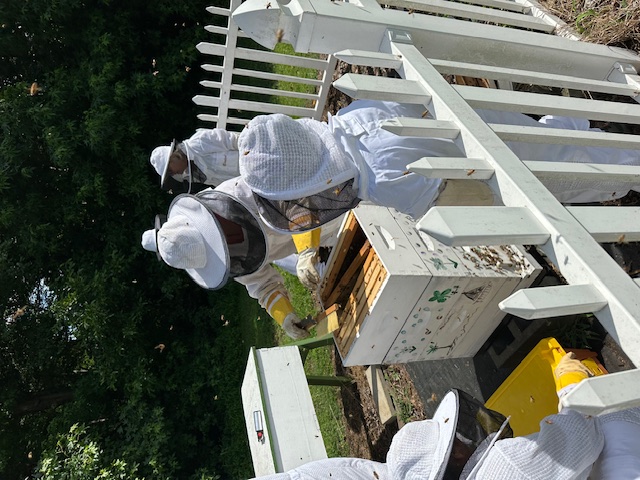The Fascinating World of Honeybees
go.ncsu.edu/readext?1054025
en Español / em Português
El inglés es el idioma de control de esta página. En la medida en que haya algún conflicto entre la traducción al inglés y la traducción, el inglés prevalece.
Al hacer clic en el enlace de traducción se activa un servicio de traducción gratuito para convertir la página al español. Al igual que con cualquier traducción por Internet, la conversión no es sensible al contexto y puede que no traduzca el texto en su significado original. NC State Extension no garantiza la exactitud del texto traducido. Por favor, tenga en cuenta que algunas aplicaciones y/o servicios pueden no funcionar como se espera cuando se traducen.
Português
Inglês é o idioma de controle desta página. Na medida que haja algum conflito entre o texto original em Inglês e a tradução, o Inglês prevalece.
Ao clicar no link de tradução, um serviço gratuito de tradução será ativado para converter a página para o Português. Como em qualquer tradução pela internet, a conversão não é sensivel ao contexto e pode não ocorrer a tradução para o significado orginal. O serviço de Extensão da Carolina do Norte (NC State Extension) não garante a exatidão do texto traduzido. Por favor, observe que algumas funções ou serviços podem não funcionar como esperado após a tradução.
English
English is the controlling language of this page. To the extent there is any conflict between the English text and the translation, English controls.
Clicking on the translation link activates a free translation service to convert the page to Spanish. As with any Internet translation, the conversion is not context-sensitive and may not translate the text to its original meaning. NC State Extension does not guarantee the accuracy of the translated text. Please note that some applications and/or services may not function as expected when translated.
Collapse ▲
A couple of years ago, Cooperative Extensions started a honeybee program in conjunction with the Community Service and Restitution Program as a way to expand opportunities for kids to complete their community service hours. Students built hives, frames, and other components needed to keep bees, and the program began to grow and expand. This expansion resulted in 4-H programs for youth and adults on basic beekeeping, hive management, and honey extraction.
The program grew to include nine hives. This past May, the first honey extraction took place and resulted in about 4 gallons of very tasty honey. This was distributed to various places including the senior center, class participants, and others who had helped start and support the program.
As we move into the third season of the program, our objective will evolve more into honey production and expanding beekeeping throughout the county. Programs will be designed to encourage youth and adults to learn more about beekeeping and perhaps start a hive of their own at home. Our next opportunity to “rob” the bees of their honey will be late spring of 2025, and we expect to greatly increase the harvest from next year and distribute the honey throughout the county – generally through the Lower Currituck Food Bank and the senior center.
Learning about bees and their very busy fascinating world is quite interesting. If you have ever wanted to keep bees or learn more about the process, stay tuned. “Bee” on the lookout for programs offered by Cooperative Extension in the future.




